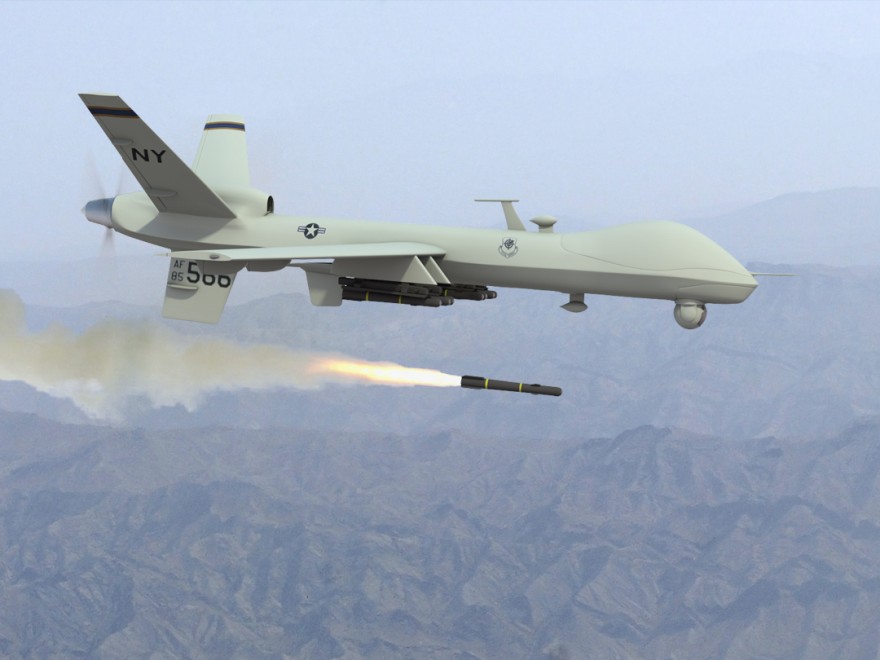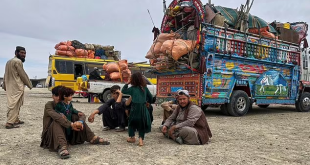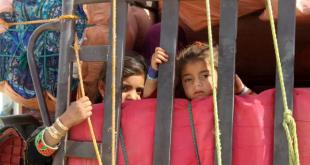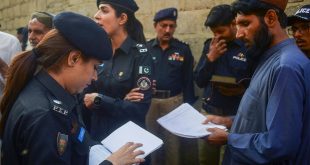In what could point to decreased accuracy in targeting or a possible shift in the rules of engagement, the rate at which civilians are being killed by United States airstrikes in Afghanistan is now at its highest point since 2008, an analysis of newly published United Nations data reveals.
On average, one civilian was killed for every four drone or jet strikes in 2015—up from one civilian death for every 11 attacks the year before, and the first time the casualty rate has risen since 2011, according to research by the Bureau of Investigative Journalism. The rate was last at such levels at the height of the Afghanistan War in 2008, when one civilian was killed for every three attacks.
Subscribe now – Free phone/tablet charger worth over $60
The rates were calculated using civilian death tolls compiled by the United Nations Assistance Mission in Afghanistan (UNAMA) for its annual report and from official U.S. Air Force data on the number of strikes it carries out in the country.
In its latest annual report, published this weekend, UNAMA says there were 103 civilian deaths from U.S. air actions in Afghanistan in 2015. Although these deaths are slightly more than the 101 recorded in 2014, they came from a third as many airstrikes. While there were 1,136 airstrikes in 2014, this number fell to 411 in 2015—the first year after the withdrawal of most U.S. troops.
The sudden increase after so many years of falling casualty rates has raised concerns that military targeting is becoming less accurate or that there might have been an unannounced change in the rules of engagement.
With the mounting pressure on the U.S. to increase the number of air attacks in Afghanistan to push back the Taliban, observers feel these concerns are particularly urgent.
Chris Woods, director of the monitoring group Airwars, says “hard-won” lessons from 2009 onwards, when serious efforts to reduce the civilian casualty rate from international airstrikes began, are being lost.
“What [the U.N. data] indicates to me is that they are not taking the same care…This is not just about accuracy, it’s about politics,” he says.
“Bluntly, how many civilians is the U.S. prepared to kill in Afghanistan to achieve its goals?” Woods asked.
In 2009, the U.S. made targeting rules far more stringent, after then-commander U.S. General Stanley McChrystal regarded soaring casualty rates as hugely damaging to the Afghanistan war effort. Apart from a brief spike in 2011, the average number of U.N.-recorded civilian casualties per airstrike has fallen every year since.
A U.S. army spokeswoman in Kabul declined to tell the Bureau whether there had been any change in targeting policies in 2015, citing operational security.
Of the 103 civilian deaths recorded by the U.N. in 2015, the gunship attack on a Doctors Without Borders hospital in the northern Afghan city of Kunduz in October accounted for 42 of the total.
In addition, as a highly detailed four-month investigation published by the Bureau shows, the U.N. has also classified 14 people killed in a counterterrorism strike in Khost province in June as civilian deaths. The U.S. disputes the U.N.’s account of Khost, saying the dead were all insurgents.
Excluding these two single incidents, the casualty total would be 47 dead in 409 attacks—a rate of one civilian dead for every nine strikes.
It is possible that the U.N.’s 2015 figures came from a handful of bloody attacks that indicate a propensity for error in the strikes, but not necessarily a systematic change in targeting procedure or intelligence.
The U.N. report does not specify how many individual incidents produced the 2015 death toll of 103.
Since combat operations were declared over at the end of 2014, the U.S. has been carrying out three types of strikes in Afghanistan: counterterrorism strikes against Al-Qaeda and the Islamic State group (ISIS), actions in defense of U.S. or NATO forces, and, in extremis, air support to Afghan forces. Prior to 2014, the figures provided by the U.S. Air Force for airstrikes included a relatively small number by its coalition allies.
Most U.S. troops were withdrawn from Afghanistan by the start of 2015. Around 6,000 U.S. troops remain there as part of a multinational operation training mission, along with a 3,000-strong counterterrorism force.
In 2015, the Taliban pressed forward, capturing towns and killing large numbers of Afghan security forces. There is now growing pressure on the Pentagon to start offering air support to Afghan forces.
Experts fear the Afghanistan conflict will intensify in 2016.
Sahr Muhammedally from the Center for Civilians in Conflict, a nongovernmental organization, warns that Resolute Support, the NATO mission in Afghanistan, needs to ensure its systems are ready for what lies ahead this year.
“I think it’s going to be a difficult year,” she says. “In 2016, the fight’s going to be ugly…. RS has to ensure that all policies and guidance have been disseminated and are being adhered to by all troops.”
When asked about the shifting civilian casualty rate, Colonel Michael Lawhorn, of Resolute Support’s Kabul headquarters, says: “We continue to take all reports of civilian casualties seriously and thoroughly review each one. We remain absolutely committed to doing everything possible to avoid civilian casualties.” (Newsweek)
 Afghanistan Times
Afghanistan Times




